Trekking poles can help the hiker walk more effectively, and add safety.
by Leon Pantenburg
(Disclaimer: Naturehike® sent me this product to field test and review. The following is my opinion, and nobody had any input into this post. All I ever promise is a fair shake.)
Are you using trekking poles when you hike? Wonder if you need to, or if trekking poles are a good safety addition to your gear?
I remember being a young backpacker…Ah, those were the days. (Puts on his rose-colored glasses) I was in my mid-20s, strong and fit and there was no wilderness area too remote, or trail too long.
It helped to be naive and uninformed about the realities of backpacking and wilderness survival. Actual, practical knowledge didn’t hold me back from attempting new adventures. After all, no brain, no pain.
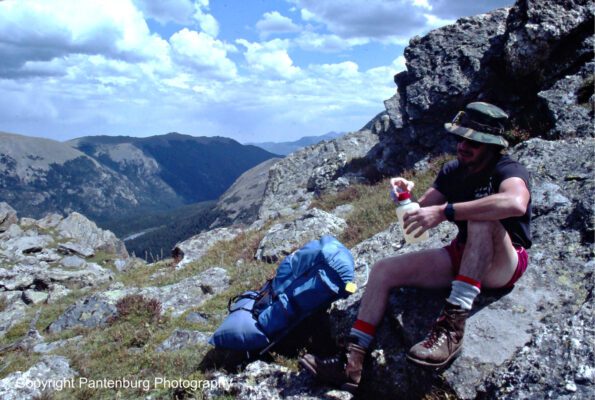
I learned about the value of trekking poles later in life.
Then, quicker than could have been imagined, I got older and – hopefully – wiser, and the terrain got steeper, the trails longer and the mountain air thinner. That lead to my quest for lighter, more efficient gear.
Along the way I discovered trekking poles, and now I never hit the trail without them.
Trekking poles, to the newcomer, resemble ski poles, and are carried one in each hand. Used in a pumping motion, the poles help stabilize a walker on uneven ground. On uphill treks, the poles can add as much as ten percent more efficiency to your hiking.
For urban dwellers, the poles are excellent for venturing outdoors when the sidewalks and parking lots are slick and icy. The poles fold up compactly inside the store. Waving a trekking pole at a possibly aggressive dog may deter any further threats.
The best use of trekking poles is when hiking. The poles have a lot of things going for them.
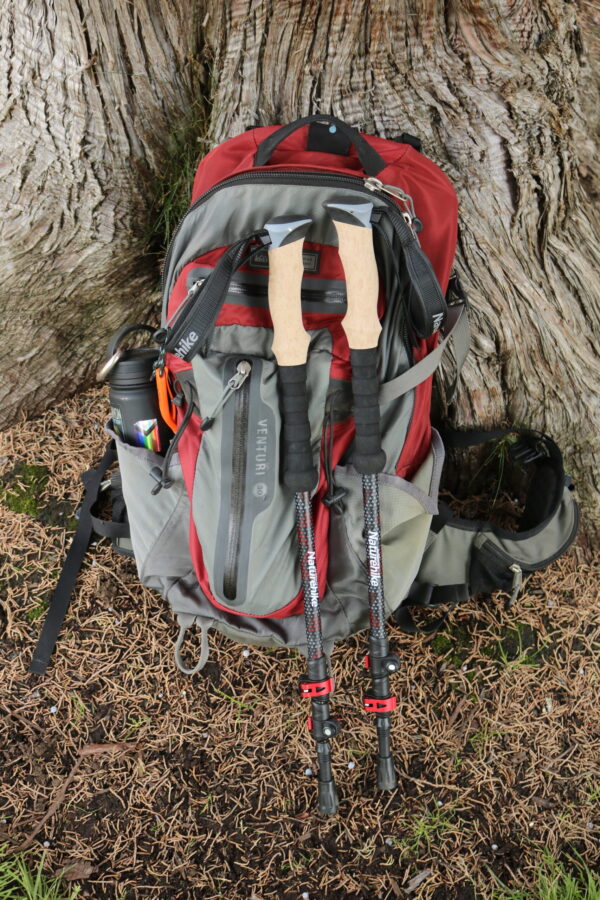
Lightweight trekking poles can make your hike a lot safer and more comfortable.
Balance: The poles make you into a solid tripod when covering slick or uneven ground. Without them, the hiker has one point on the ground at a time. The poles are really useful on stream crossings, when the rocks may be slippery or the current swift.
Take stress off joints: Going downhill can put a lot of stress on your knees and ankles. The poles help brake some of the downhill momentum.
Going uphill, the poles allow some of your upper body strength to be put into play.
Use your arms: Ever have your hands swell when you’re gaining elevation? Dangling your arms at your sides while going uphill can lead to poor circulation, causing your fingers, hands, and wrists to swell up. Keeping your arms elevated, combined with the pumping action used with trekking poles, promotes better circulation and can prevent swelling.
I’ve used several different brands of poles. Today, I’m checking out Naturehike® trekking poles.
Here are the specs:
| Model Number | NH20DS003 |
| Shaft Material | Carbon FiberJoint |
| Handle Material | Cork |
| Length | MAX 53 inches |
| Stick Tip | Carbon Tungsten Steel |
| Handle | Straight Grip Handle |
| Outdoor Activity | Mountain-climbing |
| Weight | 15 oz |
| Quantity | Two poles |
Here’s the good stuff.
Material: The carbon shafts are lightweight and durable. At 15 ounces, they are easily stowed in your pack when you don’t need them. That means you are more likely to take them along everywhere.
Length: It’s important to have the right length trekking pole. So what’s the correct height?
When holding the poles at your sides, your elbows should be situated at a right angle. This ensures good posture and maximizes comfort and effectiveness.Poles that are too long will push your posture back and cause shoulder discomfort. Too short poles will cause you to lean forward and might result in back strain.
These Naturehikes extend from 24 inches up to 53 inches, which is more than most of us will ever need. You may want to extend them all the way out when going downhill, or shorten them for climbing. This adjustable length means everyone, from kids to adults, can use them comfortably.
I found these poles to be sturdy at whatever length they were used.
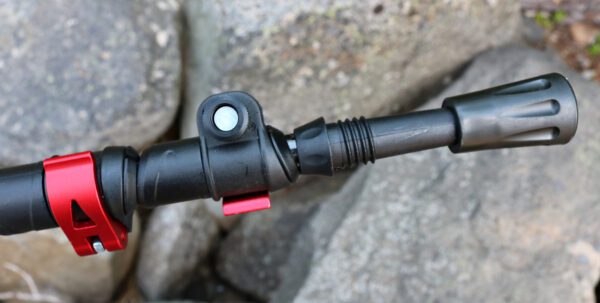
The tips have different attachments to best suit the environment they are being used in. The clips lock in the poles’ heights.
Clips: These are solid and lock in well. They secure the poles well, and you can use the poles with confidence at whatever length they are adjusted to.
Tips: The main tip is carbon tungsten steel. This wears well, and there are also accessory tips included for different environments, such as snow and mud.
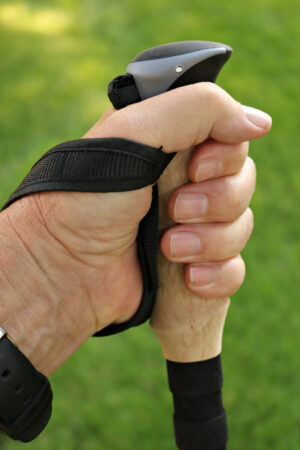
The cork handles are comfortable to use. The material helps wick away perspiration from your hands.
Handles: The straight grip cork handles provide a secure grip, even when wet. They are comfortable to use, and work well with gloves. Cork is durable and porous so it can wick away sweat from your hands and prevent blisters.
The extended foam sleeves, made of soft EVA foam, aid the user during switchbacks and abrupt terrain changes. Adjustable high density nylon wrist straps provide extra comfort and balance.
Price: The poles retail for about $60 per pair, which is about mid-range for trekking poles.
Do you need these trekking poles?
I am sold on trekking poles for safety, hiking comfort and endurance enhancement. A set of trekking poles can add greatly to your outdoor experience, and these Naturehike® poles are a good choice.
Please click here to check out and subscribe to the SurvivalCommonSense.com YouTube channel – thanks!

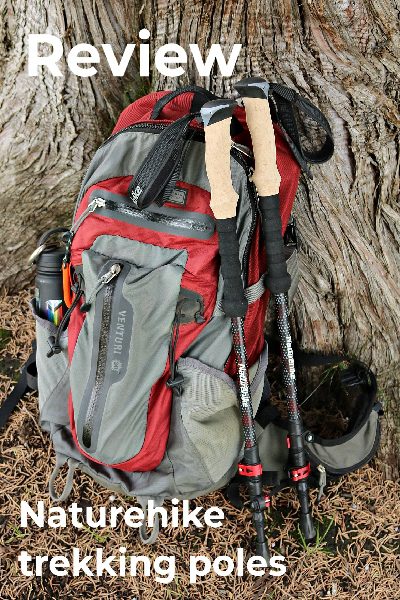

Leave a Reply